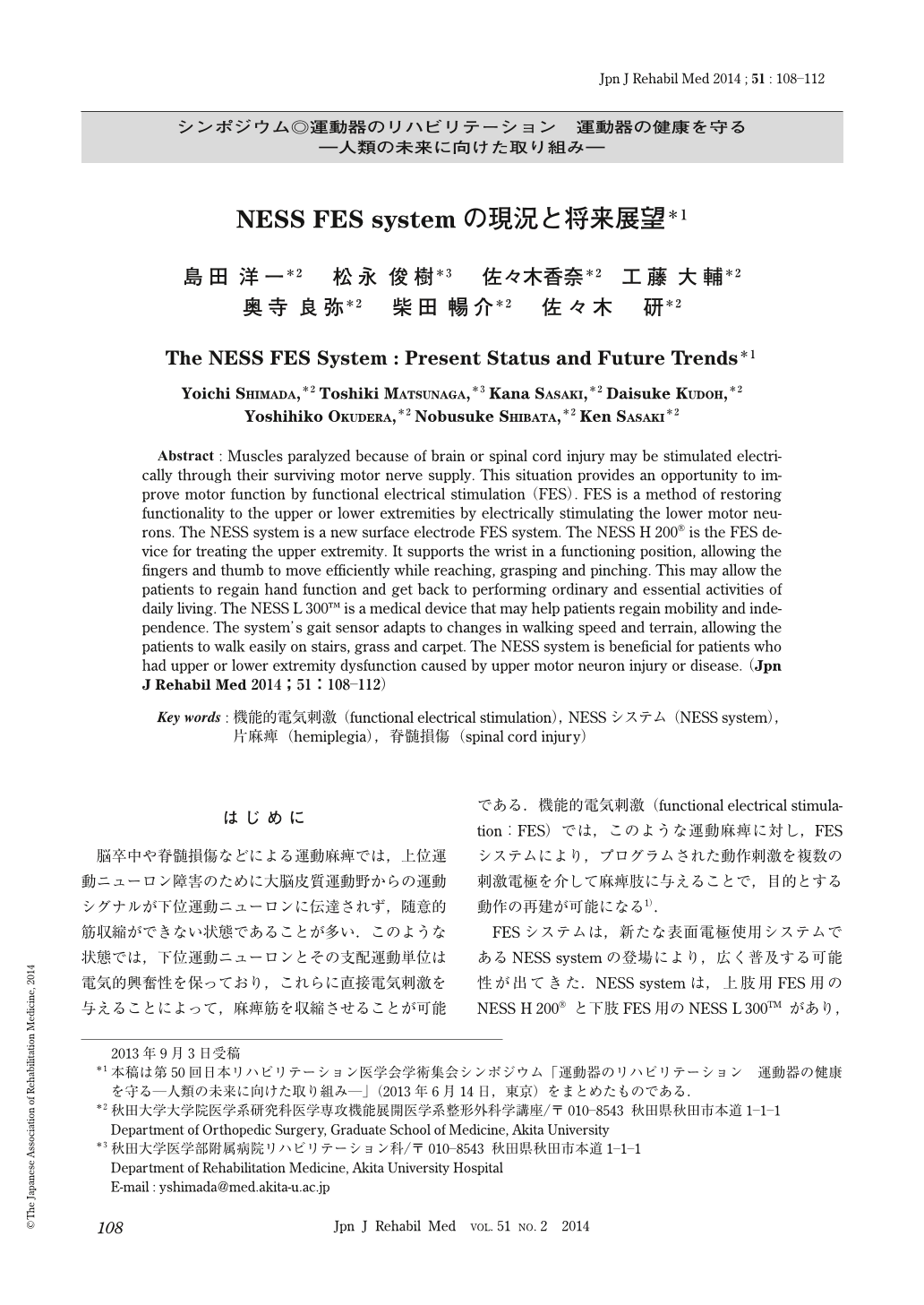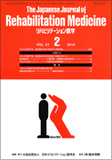Japanese
English
- 販売していません
- Abstract 文献概要
- 1ページ目 Look Inside
- 参考文献 Reference
はじめに
脳卒中や脊髄損傷などによる運動麻痺では,上位運動ニューロン障害のために大脳皮質運動野からの運動シグナルが下位運動ニューロンに伝達されず,随意的筋収縮ができない状態であることが多い.このような状態では,下位運動ニューロンとその支配運動単位は電気的興奮性を保っており,これらに直接電気刺激を与えることによって,麻痺筋を収縮させることが可能である.機能的電気刺激(functional electrical stimulation:FES)では,このような運動麻痺に対し,FESシステムにより,プログラムされた動作刺激を複数の刺激電極を介して麻痺肢に与えることで,目的とする動作の再建が可能になる1).
FESシステムは,新たな表面電極使用システムであるNESS systemの登場により,広く普及する可能性が出てきた.NESS systemは,上肢用FES用のNESS H200®と下肢FES用のNESS L300TMがあり,本稿では,その概要ならびに臨床効果について述べる.
Abstract : Muscles paralyzed because of brain or spinal cord injury may be stimulated electrically through their surviving motor nerve supply. This situation provides an opportunity to improve motor function by functional electrical stimulation (FES). FES is a method of restoring functionality to the upper or lower extremities by electrically stimulating the lower motor neurons. The NESS system is a new surface electrode FES system. The NESS H200® is the FES device for treating the upper extremity. It supports the wrist in a functioning position, allowing the fingers and thumb to move efficiently while reaching, grasping and pinching. This may allow the patients to regain hand function and get back to performing ordinary and essential activities of daily living. The NESS L300TM is a medical device that may help patients regain mobility and independence. The system's gait sensor adapts to changes in walking speed and terrain, allowing the patients to walk easily on stairs, grass and carpet. The NESS system is beneficial for patients who had upper or lower extremity dysfunction caused by upper motor neuron injury or disease.

Copyright © 2014, The Japanese Association of Rehabilitation Medicine. All rights reserved.


